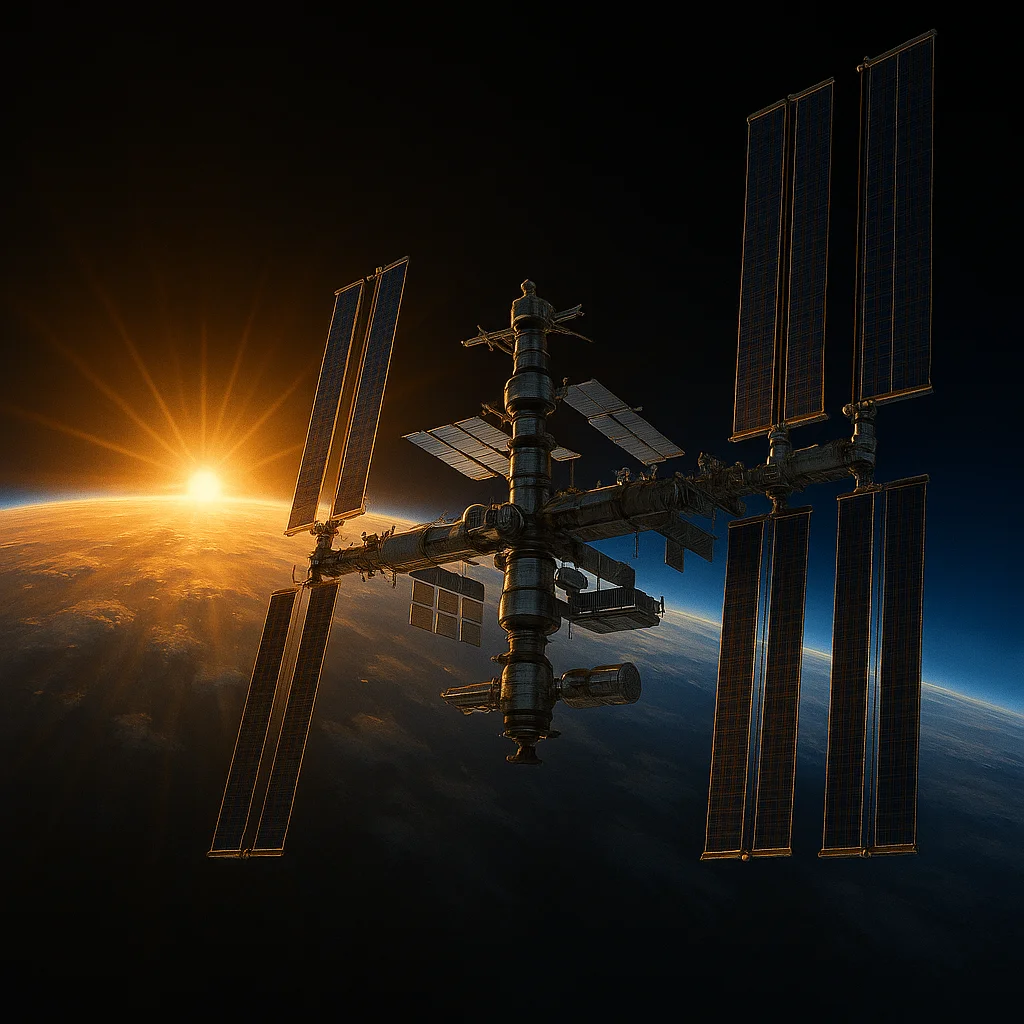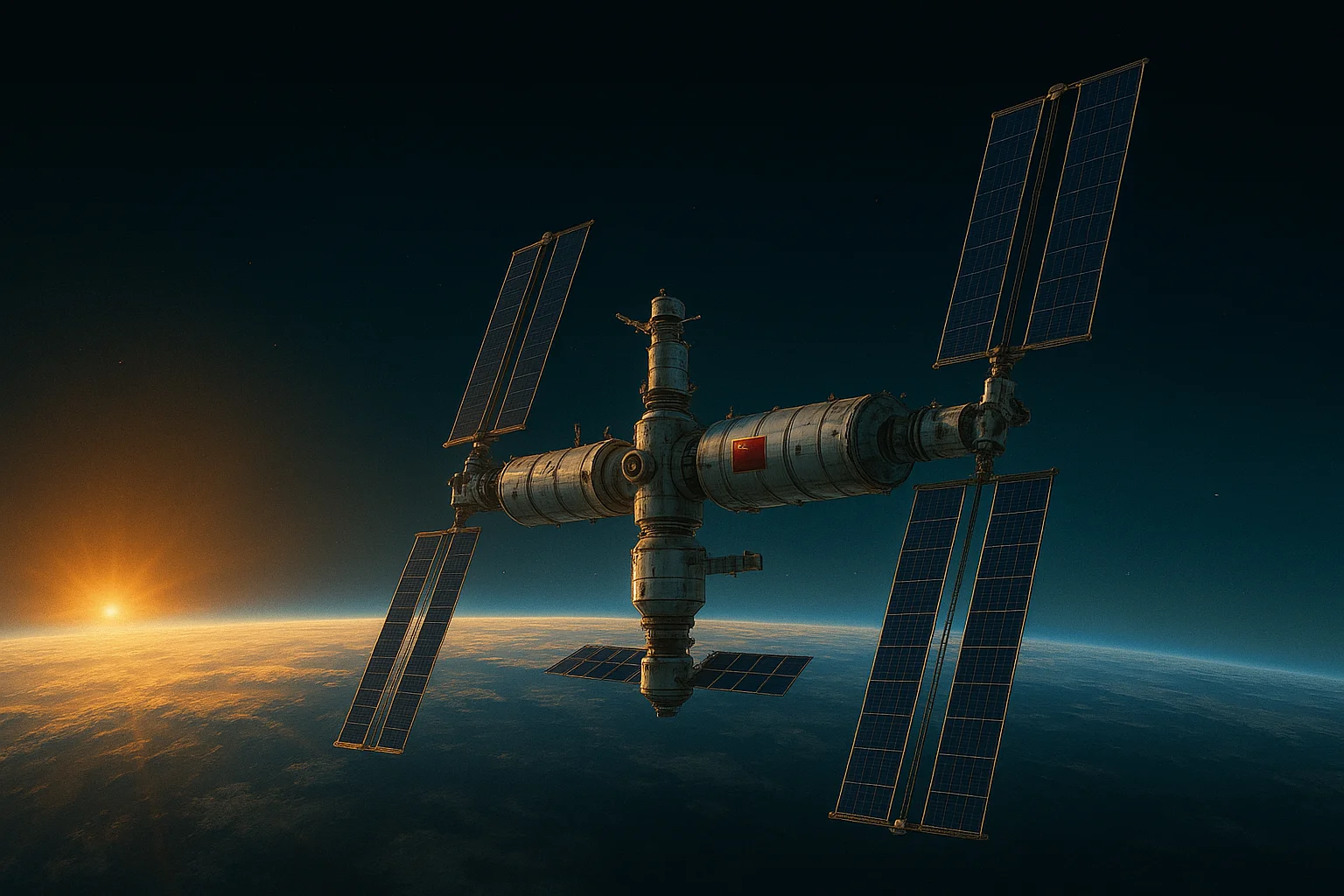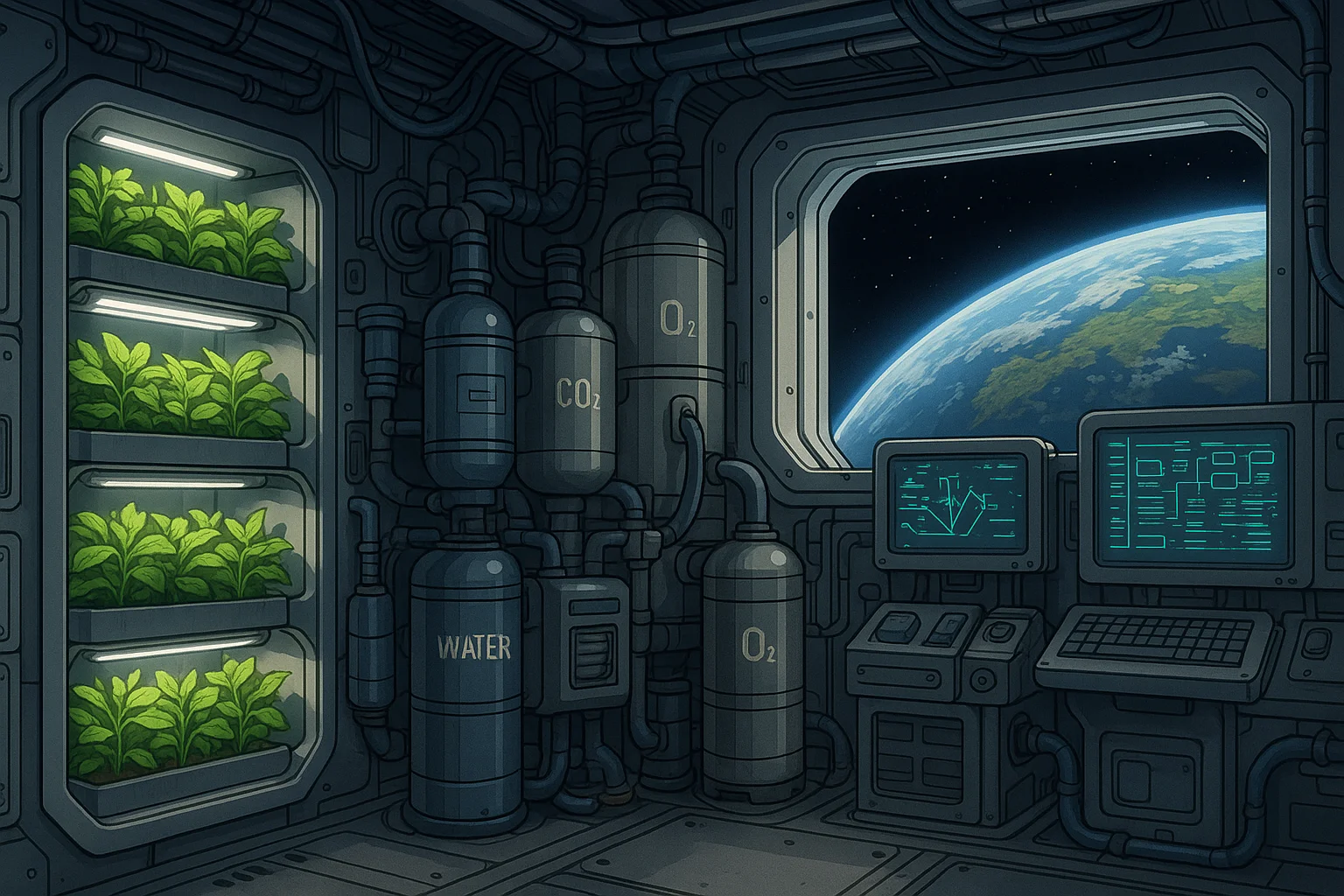Four hundred kilometers above Earth, traveling at nearly 28,000 kilometers per hour, space stations represent humanity's most ambitious permanent presence beyond our planet. These orbital laboratories have hosted continuous human occupation for over two decades, advancing science, fostering international cooperation, and preparing us for journeys deeper into space.

The International Space Station
The crown jewel of human spaceflight, the International Space Station (ISS) has been continuously inhabited since November 2000. This football field-sized laboratory represents one of humanity's greatest engineering achievements and most successful international collaborations.
By the Numbers
- Mass: 420,000 kg (about 460 tons)
- Length: 109 meters (longer than a football field)
- Width: 73 meters (including solar arrays)
- Pressurized Volume: 916 cubic meters (equivalent to a 6-bedroom house)
- Solar Array Surface: 2,500 square meters
- Power Generation: 84-120 kilowatts
- Orbital Period: 90 minutes (16 sunrises/sunsets per day)
- Cost: ~$150 billion (most expensive structure ever built)
Life Aboard the ISS
Living in microgravity presents unique challenges and opportunities:
- Daily Schedule: 6.5 hours of work, 2.5 hours exercise, 8.5 hours sleep
- Exercise: 2.5 hours daily to combat bone and muscle loss
- Food: Mix of freeze-dried, thermostabilized, and fresh supplies
- Water: 93% recycled from urine and humidity
- Internet: 600 Mbps connection for work and personal use
"The ISS is not just a laboratory—it's a symbol of what we can achieve when nations work together toward a common goal." — Peggy Whitson, NASA Astronaut
Scientific Achievements
The ISS has enabled groundbreaking research impossible on Earth:
- Protein Crystallization: Better drug development through superior crystal growth
- Materials Science: New alloys and manufacturing techniques
- Medical Research: Insights into aging, bone loss, and muscle atrophy
- Earth Observation: Climate monitoring and disaster response
- Technology Demonstration: Testing systems for future deep space missions
China's Tiangong Space Station
Completed in 2022, the Chinese Space Station (CSS), also known as Tiangong ("Heavenly Palace"), represents China's ambitious entry into permanent space habitation.
Station Specifications
- Mass: ~100,000 kg (about 1/4 the ISS)
- Core Module: Tianhe (launched April 2021)
- Laboratory Modules: Wentian and Mengtian
- Crew Capacity: 3 normally, up to 6 during handovers
- Orbital Altitude: 340-450 km
- Design Life: 10-15 years (extendable)
Unique Features
- Robotic Arm: 10-meter arm can "walk" around the station exterior
- Co-orbiting Telescope: Xuntian space telescope will dock periodically for servicing
- International Cooperation: Open to foreign astronauts and experiments
- Advanced Life Support: Next-generation recycling systems

Commercial Space Stations: The Next Generation
As the ISS approaches retirement (currently planned for 2031), private companies are developing the next generation of orbital habitats:
Axiom Station
- Developer: Axiom Space
- First Module: 2026 (attached to ISS)
- Independence: 2028 (separates from ISS)
- Features: Research labs, manufacturing, space tourism
- Crew: Up to 8 people
Orbital Reef
- Developers: Blue Origin, Sierra Space, Boeing
- Launch: Late 2020s
- Volume: 830 cubic meters (90% of ISS)
- Purpose: "Mixed-use business park" in space
- Capacity: Up to 10 people
Starlab
- Developers: Voyager Space, Airbus, Northrop Grumman
- Launch: 2028
- Design: Single-launch inflatable habitat
- Volume: 340 cubic meters
- Crew: 4 astronauts continuously
Haven-1
- Developer: Vast Space
- Launch: 2025 (first commercial station to orbit)
- Purpose: Technology demonstrator and tourist destination
- Follow-up: Haven-2 artificial gravity station planned
Life Support Systems: Keeping Humans Alive
Space stations must recreate Earth's life-supporting environment in the hostile vacuum of space:
Atmosphere Management
- Oxygen Generation: Electrolysis splits water into O2 and H2
- CO2 Removal: Molecular sieves and chemical scrubbers
- Pressure: Maintained at sea level (101.3 kPa)
- Temperature: Controlled between 18-27°C
Water Recycling
The ISS's Environmental Control and Life Support System (ECLSS) achieves remarkable efficiency:
- Processes urine, sweat, and humidity into drinking water
- Recovery rate: 93% (goal: 98% for Mars missions)
- Produces cleaner water than most Earth municipalities
- Saves $88,000 per astronaut per year in launch costs
Waste Management
- Solid Waste: Compressed and stored for disposal
- Liquid Waste: Processed through the water recovery system
- Trash Disposal: Loaded onto cargo ships that burn up on reentry

Research and Manufacturing
Microgravity Science
The absence of gravity enables unique research:
- Combustion Studies: Flames form perfect spheres, revealing new physics
- Fluid Dynamics: Understanding how liquids behave without convection
- Crystal Growth: Larger, more perfect crystals for drug development
- Cell Biology: How cells grow and differentiate without gravity
Manufacturing Opportunities
Commercial stations will enable space-based manufacturing:
- Fiber Optics: ZBLAN fibers 100x better than Earth-made
- Pharmaceuticals: Better protein crystals for drug design
- Advanced Alloys: Impossible to create under gravity
- 3D-Printed Organs: Bioprinting without gravitational deformation
International Cooperation and Politics
Space stations have become symbols of international collaboration:
ISS Partnership
- NASA (USA): Overall management, major modules
- Roscosmos (Russia): Propulsion, life support, crew transport
- ESA (Europe): Columbus laboratory, cargo missions
- JAXA (Japan): Kibo laboratory, cargo resupply
- CSA (Canada): Canadarm2 robotic system
Future Cooperation
Despite geopolitical tensions, space cooperation continues:
- Russia planning independent station (ROSS) for 2028
- India developing its own station for 2035
- Commercial stations open to all paying customers
- Lunar Gateway will be next major international project
Preparing for Deep Space
Space stations serve as testbeds for technologies needed for Mars and beyond:
Closed-Loop Life Support
- Testing 98%+ water recovery for Mars missions
- Developing food production systems
- Perfecting waste processing and recycling
Human Factors
- Understanding psychological effects of isolation
- Developing countermeasures for radiation exposure
- Testing exercise equipment to prevent bone/muscle loss
- Studying team dynamics in confined spaces
Technology Demonstration
- Advanced spacesuits for planetary exploration
- 3D printing for in-space manufacturing
- Robotic systems for external repairs
- Deep space communication systems
The Economics of Space Stations
Current Costs
- ISS Operations: ~$3-4 billion annually
- Crew Launch: $55-90 million per seat
- Cargo Delivery: $150,000 per kilogram
- Commercial Research: $7,500-35,000 per experiment
Revenue Opportunities
- Space Tourism: $55 million per seat (current)
- Manufacturing: Potentially billions in unique products
- Research: Pharmaceutical companies paying for experiments
- Entertainment: Movies, advertising, and media content
The Future of Orbital Habitats
The 2030s will see a transformation in how humanity lives and works in orbit:
Near Term (2025-2030)
- Multiple commercial stations operational
- Regular tourist flights to orbit
- First products manufactured in space for Earth use
- Crew capacity in orbit doubles
Medium Term (2030-2040)
- Rotating stations providing artificial gravity
- Industrial-scale manufacturing facilities
- Orbital hotels and entertainment complexes
- Permanent population exceeding 100 people
Long Term (2040+)
- Large O'Neill cylinder habitats
- Orbital cities with thousands of residents
- Spaceports for deep space missions
- True space-based civilization emerges
Visiting a Space Station
Space tourism is making orbital visits accessible to civilians:
Current Options
- SpaceX Crew Dragon: 3-10 day ISS visits
- Cost: $55 million per seat
- Training: 6 months preparation
- Requirements: Good health, pass medical exams
Future Tourism
- Prices expected to drop to $1-5 million by 2030
- Dedicated tourist modules with viewing cupolas
- Space hotels offering luxury accommodations
- Eventually accessible to middle-class travelers
Conclusion: Our Orbital Future
Space stations represent humanity's first permanent foothold beyond Earth. From the ISS's international partnership to China's independent achievements to the coming wave of commercial stations, these orbital outposts are transforming from government research facilities into bustling centers of commerce, tourism, and eventually, homes.
As we stand on the brink of a new era in space habitation, space stations will serve as the stepping stones to the Moon, Mars, and beyond. They are where we learn to live in space, where we discover new science, where we manufacture the impossible, and where we prepare for humanity's multi-planetary future.
The next time you see a bright dot crossing the night sky—the ISS passing overhead—remember that it carries not just astronauts, but humanity's dreams of a future among the stars. And soon, that single dot will be joined by many others, forming a constellation of human habitats that herald our transformation into a true spacefaring species.